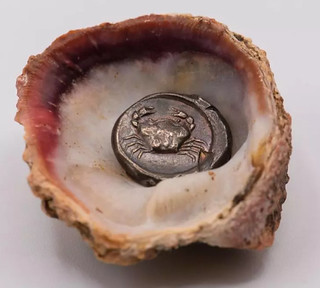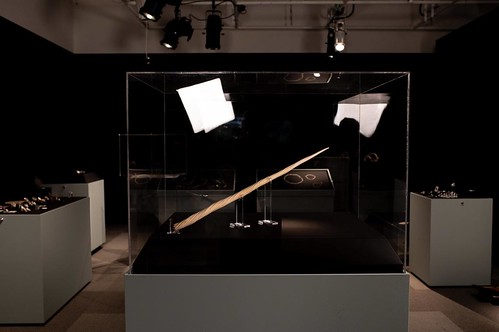
PREV ARTICLE
NEXT ARTICLE
FULL ISSUE
PREV FULL ISSUE
MONEY ZOO: ANIMALS IN THE HISTORY OF MONEYThe Nickle Numismatic Collection at the University of Calgary has mounted an exhibit on the historical use of animals as money and animals portrayed on money itself. It runs until May 27, 2022. -Editor
What is this intricate relationship, the sacred connection between humans and animals? What kind of evidence do we have from money and trade? Trying to answer these questions, the exhibition highlights the examples of the historical use of animals as money as well as animals portrayed on our past and present currencies. The use of money today is so ubiquitous that we seldom give thought to why it functions the way it does, how it came to be, or what we do without it. It often comes as a surprise when we learn that trade items and diverse forms of money have been used as currency for thousands of years prior to the invention of coinage, or even simultaneous with it. Hundreds of different items made from animals and other life forms have been used to accommodate the diverse needs of everyday commerce and trade by different societies throughout history. Some defy credulity, while others have stood the test of time.
Fortunately, the demand for beaver pelts all but disappeared after hat-makers found silk fabric to be more economical and just as stylish. The beaver was given an official status as an emblem of Canada on March 24, 1975. Canadian animal coins, beaver pelt, Arctic white fox fur and trade tokens can be found on display. Another fascinating case is a shark tooth sword from 30 pairs of shark teeth from Solomon Islands. Used as commodity money and a trade item in the area, today the shark teeth can serve as an ecological snapshot of the reefs that lined the islands more than a century ago, reflecting the historical biodiversity in the reefs that has since been lost due to environmental degradation.
Sword teeth from different shark species, some undocumented within thousands of miles of the islands, allow scientists to study Other exhibition themes include birds, turtles, horses, lions, bulls, elephants, bees, shells, a narwhal tusk and even a Papua New Guinea necklace made of beetle legs. An elephant coin by Julius Caesar, eagle coins by Brutus and Cleopatra VII, Celtic horse coin by Queen Boudicca, mother-of-pearl gaming tokens that belonged to one of King George III's sons, bird feathers, the first European turtle coins, Indigenous shell necklaces, the first world's coinage with a roaring lion, whale teeth, and the very last pagan coin of the Roman Empire depicting an Egyptian sacred bull are just a few captivating examples on display.
To read the complete article, see:
Wayne Homren, Editor The Numismatic Bibliomania Society is a non-profit organization promoting numismatic literature. See our web site at coinbooks.org. To submit items for publication in The E-Sylum, write to the Editor at this address: whomren@gmail.com To subscribe go to: https://my.binhost.com/lists/listinfo/esylum All Rights Reserved. NBS Home Page Contact the NBS webmaster 
|


